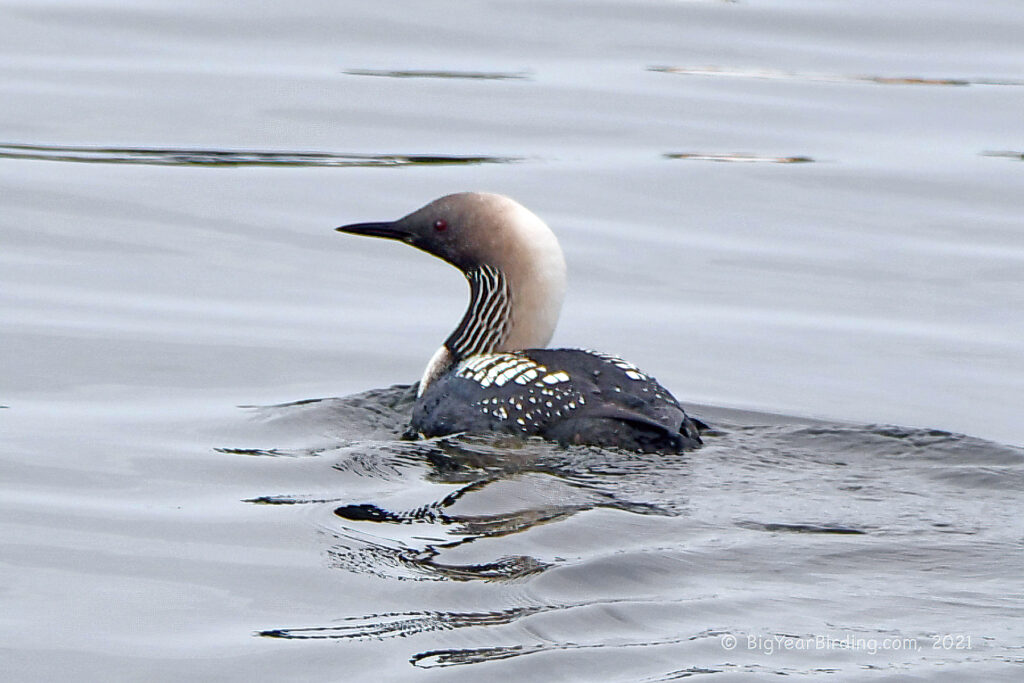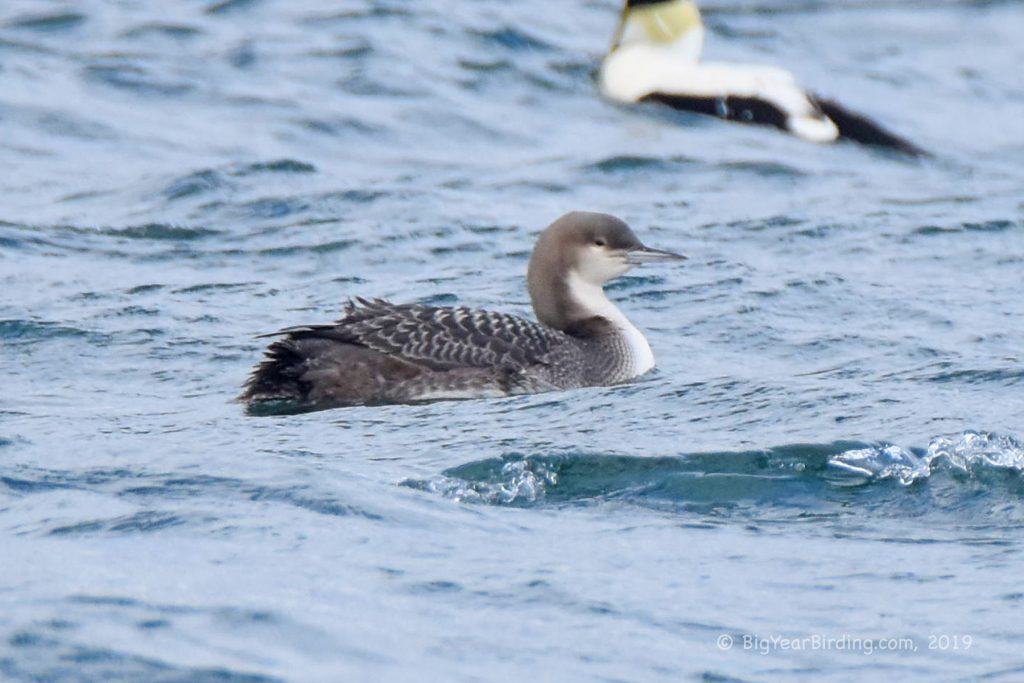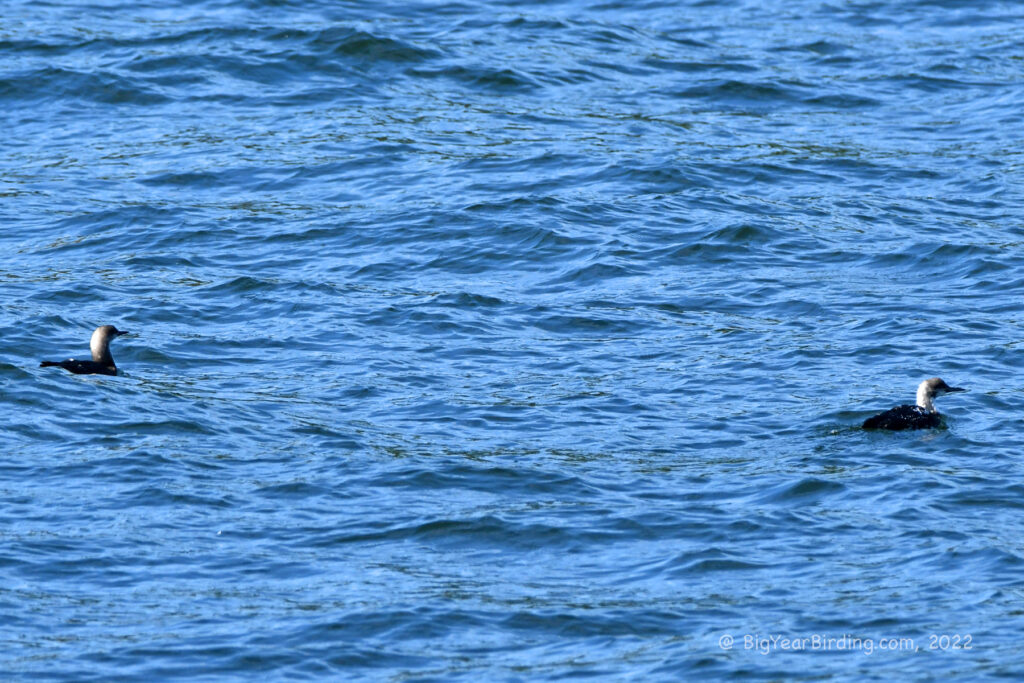
The Pacific Loon, also known as the Arctic Loon, is a large waterbird that belongs to the family of loons, or divers. Adults can reach a length of 24-28 inches and weigh between 2.5-4.5 pounds, with a wingspan of approximately 48-60 inches. These birds have a distinctive black head and neck with a white throat, a gray back, and a white underbelly. During the breeding season, they develop a striking black and white striped pattern on their neck, which sets them apart from other loon species.

Pacific Loons are migratory birds that breed in the Arctic tundra during the summer months and migrate south to coastal waters in the Pacific Ocean for the winter. They can be found along the Pacific Coast from Alaska to California and as far west as Japan. During migration, they can travel long distances, with some individuals traveling over 10,000 miles. They usually begin their southward migration in August and September and return to their breeding grounds in April and May.
One of the distinguishing features of the Pacific Loon is its distinctive call, which is often described as a wailing or yodeling sound. This call is an important part of their courtship behavior and can be heard throughout their breeding season. During the non-breeding season, Pacific Loons can be seen in large flocks, often mixed in with other species of loons and diving ducks. They are expert divers and can stay underwater for up to 3 minutes in search of their prey, which consists mainly of fish and crustaceans.
In recent years, the Pacific Loon has faced several threats, including oil spills, loss of breeding habitat, and climate change. As a result, their populations have declined in some areas, and they are now considered a species of conservation concern. Efforts are underway to protect their breeding and wintering habitat, monitor their populations, and minimize the impact of human activities on their survival.

Overall, the Pacific Loon is a remarkable bird that is adapted to life in the harsh Arctic environment. Its striking appearance and unique call make it a favorite among birdwatchers and naturalists alike, and its migration patterns and feeding habits continue to fascinate researchers and conservationists.

